To view and download issues, click on thumbnails below
- Street Fever
- March/April 1978
- May 1978
- June 1978
- July 1978
- August 1978
- September 1978
- October 1978
- November 1978
- December 1978
When I returned to Adelaide in late 1977 after two-and-a-half years in the UK, I came back with 25 singles—Sex Pistols, The Clash, The Damned, Elvis Costello, Wreckless Eric, Tom Robinson Band, X-Ray Spex, The Rezillos, Slaughter & the Dogs etc.
I moved into a small cottage at 14 Donegal Street, Norwood, owned by my old Adelaide Uni friends Larry Buttrose and Donna Maegraith, and proceeded to visit all my other mates in an evangelical way—to convert them to this fantastic new music. Most looked at me rather strangely and asked if I’d like another cup of tea, but Span, an old friend from Whyalla, introduced me to Stuart Coupe.
Coupe was editor of the Flinders University student newspaper, Empire Times. We got talking and quickly realised we shared this zeal about the punk/new wave explosion. We used to frequent the go-to import shop of the day—Modern Love Songs in Twin Street—and with the encouragement of the owner, Bo and help from the crowd that hung around there, we decided to channel the prevailing do-it-yourself ethos and put together a fanzine.
As well as enjoying blanket coverage in the British rock weeklies like New Musical Express, Sounds and Melody Maker, the punk explosion had inspired a flush of fanzines. The first and most famous was Londoner Mark P’s Sniffin’ Glue (+ Other Rock’n’Roll Habits for Punks), which launched in July 1976 and spawned a rash of imitators.
The day after the December 1977 federal election that returned Malcolm Fraser’s conservative coalition to government, a motley (and hung-over) crew assembled at Modern Love Songs to put together the fanzine, armed with typed contributions, photos, and magazines to cut up and paste. Apart from Coupe and myself, there were David Walker, Andy Vague and Nick Hope from the soon-to-be-legendary Adelaide punk outfit The Accountants; Chuckie Suicide (who became The Accountants’ roadie); David Crowe, Tracey, Alex and Lloyd (who went on to play in Spanish Holiday). On the credits page we namechecked the other Australian ‘zines we were aware of—Suicide Alley (Brisbane), Pulp (Melbourne), Alive and Kicking (Melbourne) and Spurt (Sydney).
We laid out the magazine on the floor of the basement record shop and Stuart got it printed at Empire Times. Bo said he’d pay the print bill in exchange for a full-page ad. The bill was never paid. Very punk. The fanzine was called Street Fever.
Coupe and I enjoyed the exercise so we started talking about ‘What if we started a magazine?’ At that time there was a booking agency in Adelaide called Sphere, managed by Chris Plimmer, who later became prominent in Sydney with the Nucleus agency. He thought it was a great idea to have an Adelaide music magazine. We agreed to include a gig guide and Plimmer persuaded music venues, shops and bands to buy ads, so we’d get some money coming in. We did the rounds of the major record companies in Adelaide, which were generally enthusiastic—particularly Phonogram which had albums from The Ramones, Talking Heads, and Richard Hell and The Voidoids, and really didn’t know what to do with them!
We needed a name. One of the singles I’d brought back from the UK was ‘Roadrunner’, an unlikely 1977 hit there for Jonathan Richman. A hymn to the power and magic of rock’n’roll, I thought the name was a contender. Coupe obviously liked it too—in Street Fever he had waxed lyrical: ‘… one of the greatest singles EVER—a song about cruising with the radio on and being in electric communion with the modern world, modern girls and modern rock’n’roll.’ One lunchtime in the Adelaide Uni refectory, I suggested we call the magazine Roadrunner. Coupe pondered only for a second. ‘Yeah—that’s great!’
Coupe was living in a share house at 13 Wainhouse Street, Torrensville with Alex Ehlert and Mark Burford. He also knew a slightly dotty layout artist at Flinders called Allan Coop (no relation). So with no capital and no assets, but bucketloads of energy and enthusiasm, Roadrunner was born. For the first issue in March 1978, the crew was Coupe and myself as editors, Allan Coop on layout and design, Alex Ehlert leading the Construction team, Mark Burford as reviews editor and Chris Plimmer as advertising manager. Larry Buttrose got in touch with his sixties surfing memories for the cover story on The Beach Boys. As well as writing articles and reviews, Jillian Burt smuggled us into 5UV to use their IBM Selectric, or ‘golf ball’ typewriter for the copy. This enabled us to set columns of justified type and get different type fonts and sizes.
Coop did the layout in a shed out the back of the house in Torrensville, Empire Times did the printing and on Sunday, 12 March, a few of us trekked out to Football Park at West Lakes to try selling copies before The Beach Boys’ concert. Not many were interested, even at a price of just 30 cents, but we weren’t discouraged.
Apart from setting up the magazine, I had been looking for a ‘real’ job over the summer. In March I was offered a position in the unemployment benefits section of the Commonwealth Department of Social Security—ironically located in Hindmarsh Square, directly above Modern Love Songs. I accepted, but remained committed to the magazine. Coupe enlisted some other contributors. He was in touch with Bruce Milne and Clinton Walker, who had published the fanzine Pulp in Melbourne, and they thought what we were doing was interesting so came over to help.
The News, Adelaide’s afternoon paper, ran a snippet on 11 May 1978.
‘Adelaide’s own music mag, Roadrunner, looks like being around for a while. The second issue is out and costs 30c from newsagents and record stores. The typos and spelling mistakes are a bit hard on the eyes, but buy it for the interesting “let it all hang out” interview with Molly Meldrum. Also in the issue are stories on Quasar, Clean Cut, Chick Corea, Ry Cooder and the Resident [sic], and Steve Whitham starts a regular “Hi, I’m your local friendly DJ” column.’
The content in the early issues was an idiosyncratic mix of the local (Young Modern, Riff Raff, Neon Heart, The Sultan Brothers, The Warm Jets, Cunning Stunt, Middle Class); interstate new wavers (The Sports, High Rise Bombers, Boys Next Door, Stiletto); international tourists (Dylan, Weather Report, John Martyn, Graham Parker and The Rumour, Billy Connolly); retrospectives (The Beach Boys, The Monkees, Marc Bolan); think pieces (The Death of Punk, Powerpop); and stories about the music industry (the above-mentioned interview with Countdown‘s Ian ‘Molly’ Meldrum, 5KA’s David Day, the birth of community radio station 5MMM, how to be a rock writer). All this plus live reports, album and singles reviews, and an Adelaide gig guide. Advertising came from the bands, venues, record shops and equipment suppliers of the Adelaide scene plus record companies (EMI, CBS, Festival and Phonogram), television and radio stations (Seven, Nine and 5UV), and a couple of corporate entities—the State Bank of South Australia and Coke.
In 1978, Roadrunner was available only in South Australia. Record shops and musical hire outlets sold it off the counter and B. J. & K. L. Fuller distributed to SA newsagents. Coupe drew on his Empire Times experience, I’d dabbled in poetry magazines while at uni, Bruce Milne and Clinton Walker had produced their fanzines, but none of us had any real experience in the business of magazine publishing. We all just loved the music and liked writing about it, and photographers such as Eric Algra and Joe Murray approached us and offered photos.
Things went well for the first three issues and I guess we were starting to get a bit full of ourselves. A self-righteous editorial manifesto by Coupe in Issue 4, July 1978 provoked Rock Australia Magazine editor Anthony O’Grady to a response. ‘Dear Roadrunner,’ he wrote, ‘Thanx for at least for spelling RAM‘s name right in your July edition. And that’s all I’m thanking you for.’
Uh oh.
O’Grady asked us to consider two quotes.
‘Roadrunner seeks to be a Pop/Popular CULTURE magazine as opposed to a Pop MUSIC magazine. Future issues will focus on books, movies, rock’n’roll theory …’ (Quote 1, Roadrunner, July 1978).
‘We also know our rock’n’roll generation is more a lifestyle choice and its expression is more than music.’ (Quote 2, from the editorial in RAM‘s first issue, March 1975).
He then went on:
‘Hmmm. Sounds like neither publication wants to fall into the trap expressed by Quote No. 3: ‘The major purpose and I suggest failing of these newsy rock’n’roll papers is that they serve to maintain the illusion that rock’n’roll exists independently of the forces around it.’ (Roadrunner No. 4 again.)
‘So it really hurts (maaaaan) that No. 3 is how Roadrunner categories [sic] RAM in 1978.
‘So. Guess RAM failed the culture test. The Roadrunner culture test anyway.
‘On the other hand, can it be, (el gaspo!) Roadrunner just hasn’t noticed all the youth/lifestyle articles on movies, living on the cheap, sci-fi, mysiticism [sic], surfing, politics, conservation we at RAM have been assiduously including (average over one-and-a-half editorial pages per issue) for the past three years?’
O’Grady offered Coupe a staff position on RAM in Sydney a month later.
As the year wound down we convened a summit meeting in Torrensville. Coupe had gone. Clinton Walker was back in Melbourne, but still involved as Melbourne editor. The live scene in Adelaide at the time was still pretty much stuck in blues and boogie mode, and the recording scene was almost non-existent, so it was no surprise that Bruce Milne had also decided to return to Melbourne. The novelty having worn off, Alex Ehlert and Allan Coop decided, nicely, to take their bat and ball and play elsewhere. So it was only me left standing. Collette Snowden, who had been writing for the mag under the nom de plume Sue Denim (geddit?), attended the meeting and was a strong supporter for continuing.
I decided to carry on. I didn’t think the magazine had reached anywhere near its potential and it was certainly more fun than my day job.
* * *
Excitement was building in Adelaide at the prospect of the Progressive Music Broadcasting Association (PMBA) obtaining a community radio licence and what that would do for the diversity of the airwaves.
It boded for increased exposure for the local music scene and the new music that Roadrunner was championing. Michael Zerman, who was based at the South Australian Media Resource Centre in the old Sym Choon fireworks factory off the east end of Rundle Street, had been involved in the launch of 2JJ in Sydney and was providing advice to the PMBA. He also offered invaluable publishing advice to Roadrunner.
Zerman had been a key figure in the Sydney office of the collective headed by publisher Phillip Frazer that produced the Australian version of Rolling Stone, as well as the alternative magazines Revolution, High Times and The Digger in the period 1971–75. Frazer had founded Australia’s most influential music magazine, Go-Set, in 1966, and remained publisher until 1972, when it was taken over by its printer, Waverley Press. Zerman recently told me he had actually been company secretary of the Australian Rolling Stone publishing company, Green Grass Pty Ltd. As The Digger was dying in late 1975, under the threat of lawsuits from Norm Gallagher and the BLF, as well as the general decline after the sale of the Rolling Stone licence to Paul Gardiner and Jane Matheson, Zerman also took on the company secretaryship of High Times Pty Ltd.
Zerman was production editor on another new Adelaide magazine, Preview, and had already steered us in the direction of Preview‘s printer, Bridge Press in Murray Bridge, an hour out of Adelaide on the South Eastern Freeway. Bridge Press was cheaper than anyone in Adelaide and was keen for the extra work. It ended up printing the magazine for virtually the remainder of its life (September 1978 right through to July 1982). It doesn’t matter if you run up a debt with your printer, Zerman confided —it gives them an interest in keeping you going. And so it proved.
A more professional production set-up was an immediate priority. Clive Dorman was a newspaper journalist who had seen the potential of phototypesetting. He set up his own business, Neighbourhood Typesetting, and became Roadrunner‘s production editor. Geoffrey Gifford, who ran a small design studio, took over design and layout, and Collette Snowden joined as office manager.
As the new production crew moved in, it was becoming clear that there was a growing disconnect between the type of music we wanted to write about and the Adelaide music scene that had initially supported the magazine. The solution? National—and international—coverage and national distribution.
On the writing side, Keith Shadwick became the magazine’s first London editor. A poet, writer and saxophone player with Uncle Bob’s Band, The Bleeding Hearts and, most recently, High Rise Bombers (with Paul Kelly and Martin Armiger), Shadwick left Melbourne in mid-1978 and quickly established himself on the London scene, where the New Wave was still cresting. He contributed news, live reviews (including one about Public Image Limited’s first performance), a fond retrospective on Marc Bolan and—after embedding himself on the tour—an exhaustive behind-the-scenes account of The Sports’ early 1979 twirl around the UK supporting Graham Parker and The Rumour.
Michael Zerman gave me an address for Phillip Frazer in New York and I asked if he would be interested in writing about New York. While wishing us the best of luck, Frazer declined, saying, ‘I don’t know if I can help you. I’m not particularly following the music scene here because I dislike most of it. New York punk is mostly ephemeral, weighed down by posturing about decadence/pain/how sleazy it all is etc., rather like the Beatnik era.’ Fair enough. He went to say he ‘liked the general feel of Roadrunner—some careful or maybe just talented writing—but it’s a shock just how other-directed people in Australia are’.
Michael Hope, an old friend, sat down with The Accountants for a double-page spread in the November issue. Clare Leaver ‘schlepped out to Elizabeth’ to take the photos, including a nude shot of guitarist Sid intended for the cover. But just like Janis Joplin—who was bumped from the front of Newsweek in 1969 when former President Dwight D. Eisenhower died—Sid had to step aside for the real Sid (Mr Vicious) after the Sex Pistol was charged with the murder of his girlfriend, Nancy Spungen, at New York’s Chelsea Hotel. Ross Stapleton provided the ‘inside account’ but Michael Hope was less than impressed, writing to the letters page, ‘It was sad to see a sensationalist piece of gossip on this year’s media fodder, Sid Vicious, totally invalidate the spoken understanding Roadrunner had with next year’s media fodder—our own Accountants.’
After some encouragement from Coupe, who maintained friendly relations with his comrades in the south throughout his tenure at RAM, Stuart Matchett from 2JJ signed on as Sydney editor, and Scott Matheson, then guitarist with Brisbane band The Numbers, offered to contribute stories from Queensland. Ian Henderson started writing about Perth, and with Bruce Milne and Clinton Walker in Melbourne we had all mainland states covered. We even appointed a poetry editor—Donna Maegraith. And did publish some poems. It was the seventies after all.
One poem that was submitted but never ran was Larry Buttrose’s reminiscence about 5MMM’s New Year’s Eve fund-raising bash at the Burnside Town Hall in Adelaide (see below). With a line-up of the best new talent Adelaide had to offer—Soka, The Warm Jets and Young Modern—it was a magical night. And Buttrose caught the mood perfectly.
In December, Clive Dorman hit the road and tied up newsagent distribution in NSW through Allan Rodney Wright and Victorian distribution through Melbourne Wholesale Newsagency. In SA we already had distribution through Fullers, while in Queensland, Scott Matheson, under the banner of Riptide Distribution, supplied Rocking Horse Records and other interested record shops. Copies to White Rider Records in Perth rounded out the picture. I took a deep breath, quit my day job and took the plunge into full-time rock’n’roll publishing.
* * *
As Young Modern played, long ago.
Recently, you told me you were up the front,
to the right.
at the public radio station ball
that New Year’s Eve,
bopping your hardest, the big red strawberry
on your chest which said
please eat me &
one did not
I didn’t know you, despite all the parties,
protests, despite us knocking
inevitably into
each other’s partner
at so many dances;
I didn’t know you, but we all danced together –
you, Donna, Donald; Collette,
Heather; me; as
Young Modern played those
Beatles standards so
crisply, it was becoming 1979;
another end
of another era, and we were not
being told;
we were not ready
near Alice Springs, the boulder
which finally cracked that night
might just have known;
John Dowler might even have, and
the asteroid
which disappeared into the green
mists of Venus
was perhaps in possession of some
pertinent information;
but the drummer you took home
that night
did not know: and you
did not
I was with another woman: you were with 4 women,
and have told me how you were all half mad
with despair, the anxiety of starting yet
another year alone, & everyone there was a bit
crazy, taking someone home for a
little relief, jiving to the band for lunacy,
play faster, play faster
you probably brushed me; I probably
trod on your toe & we would have grinned
idiotically and breathlessly a half moment;
but the night sky
did not have
the certain stars,
and would not have them
until some myth of time
some fabrication of our brains,
could unravel
at last the knots of our isolation,
take all our near misses and pluck them
from the mass of human static, & though
I should have loved to
I did not kiss you New
Year, or goodnight; for us
it was never
automatic
—Larry Buttrose


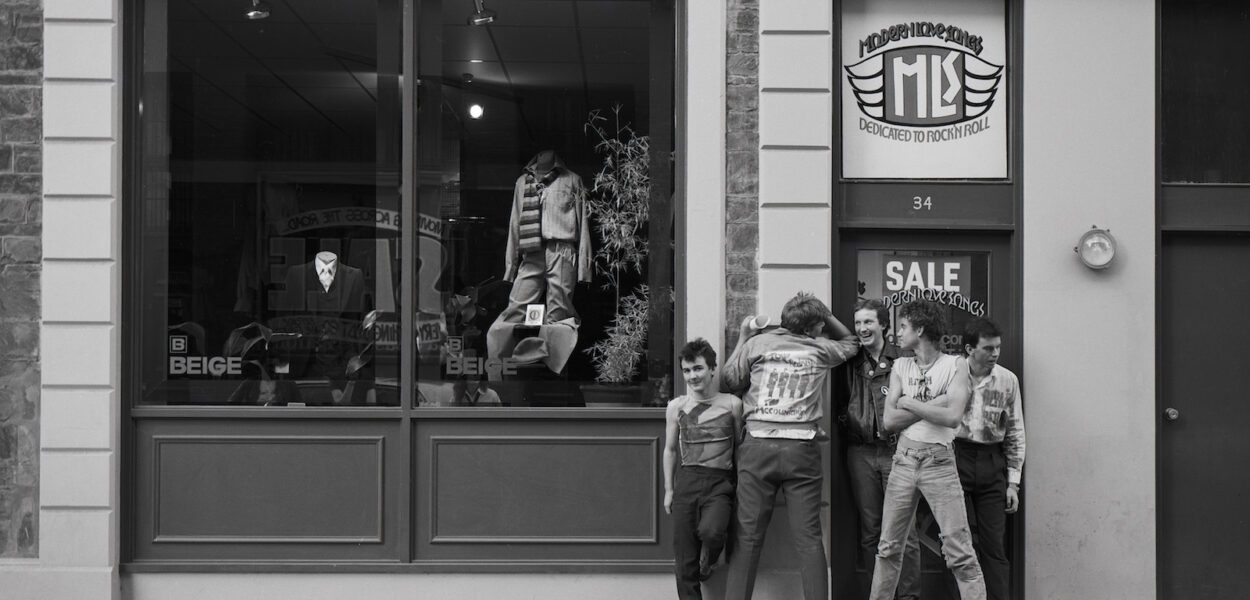
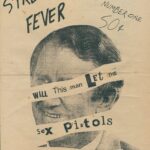
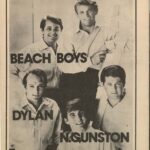
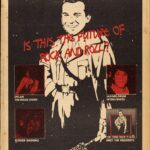
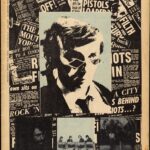
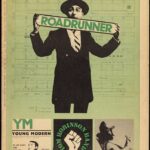

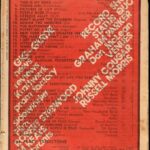
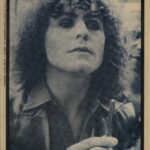
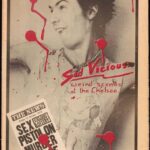

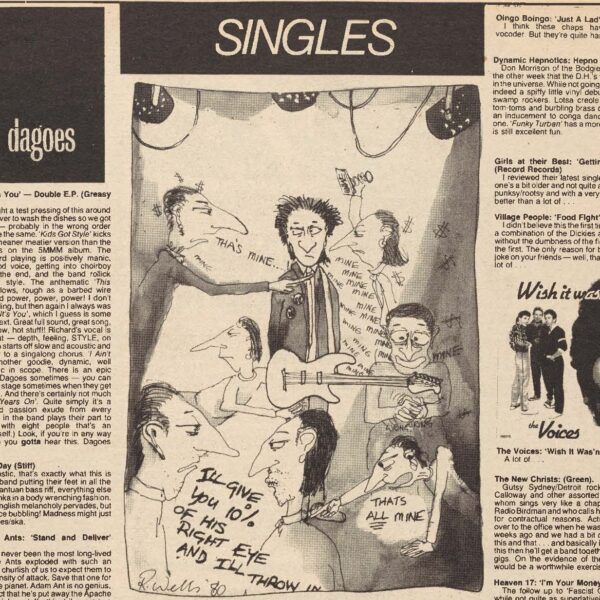
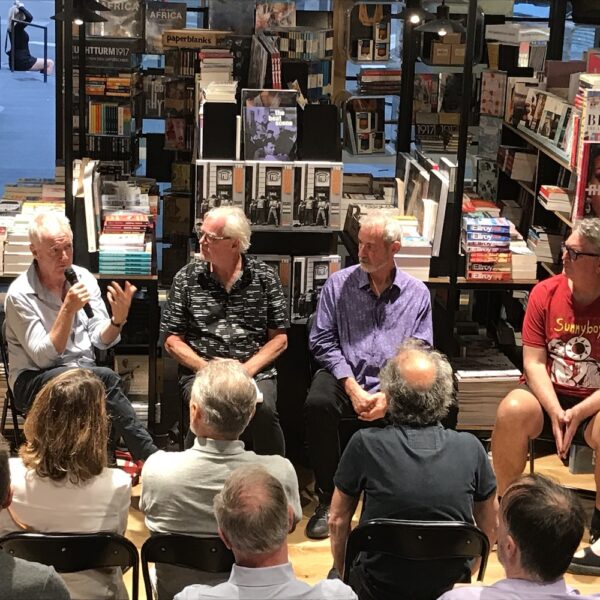
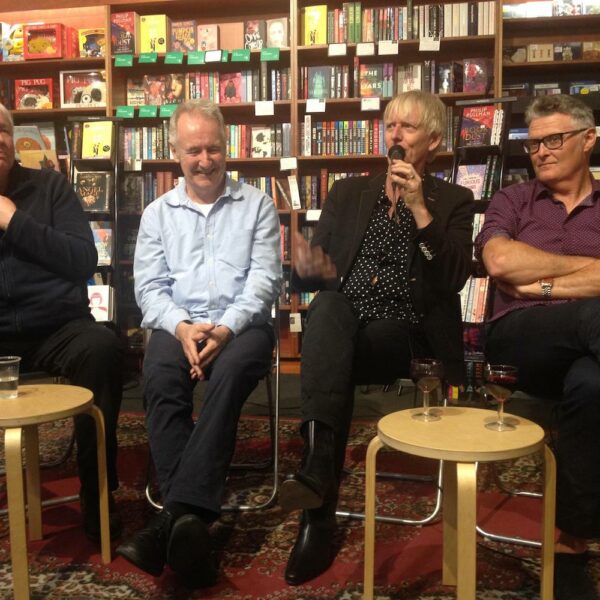
If Modern Love Songs was the ‘go-to import shop’ what about Verandah (Neil McKinnon)? I don’t remember MLS.
Hi Cathy – Adelaide had some great record stores in 1978. See Issue 7, page 5 for Roadrunner’s review of them. Verandah was an excellent import shop. I think John Dowler from Young Modern spent some time behind the counter there. I guess MLS just chimed with RR’s excitement about the new wave. As the article hints at, I don’t think it had a long lifespan so not surprising you may have missed it. cheers, Donald
Thanks for the reference, I’ve only just come across your site.
After decades, I’ve recently been able to retrieve my small record collection from storage and it makes me want to buy a playing machine and go back to those days. But when I look at the price of new LPs, I’m worried it’ll become an activity I can’t afford.
I hear you Cathy! I don’t buy a lot of vinyl but when I do it tends to be second hand. There is a lot out there still.